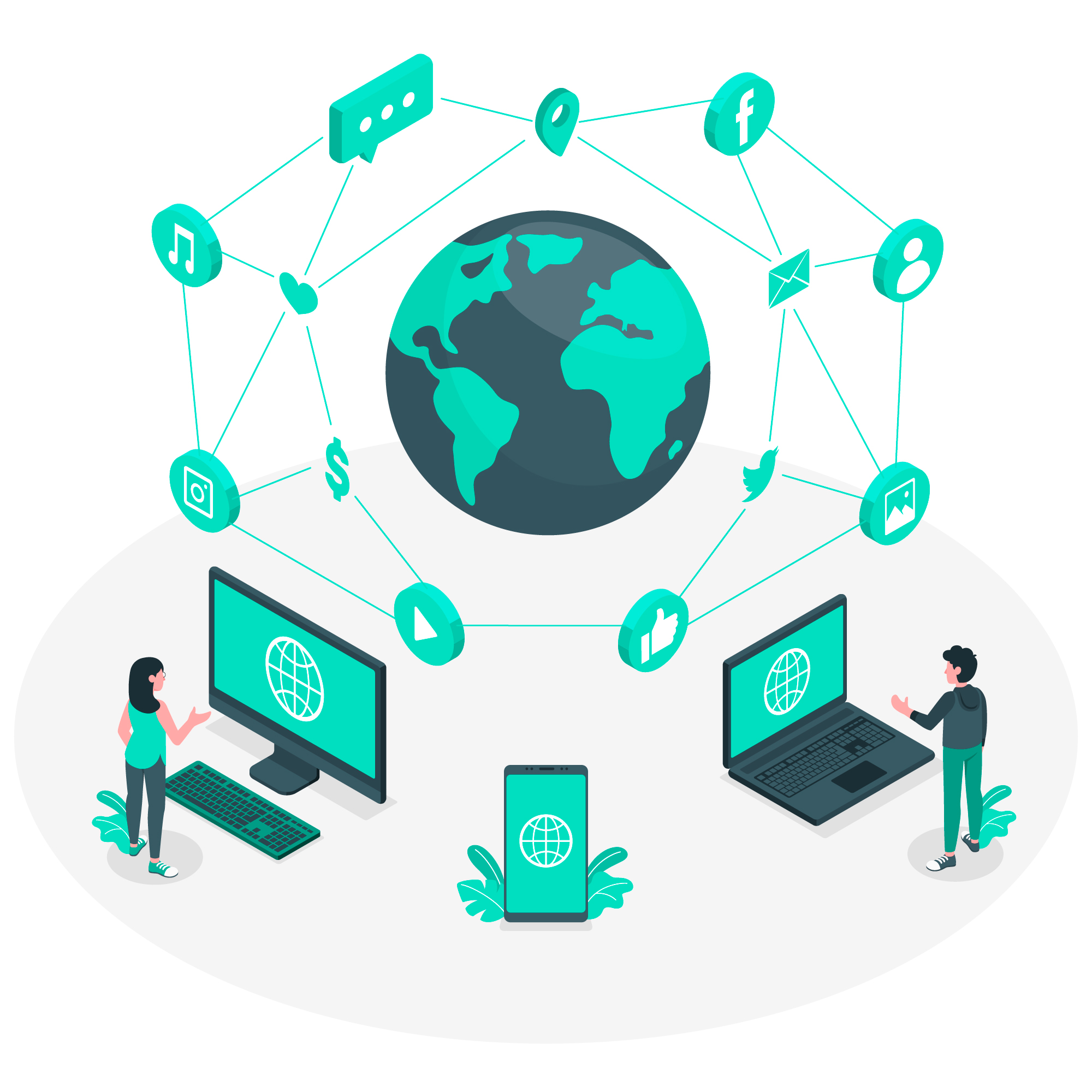Building a Digital Ecosystem: Integrating Solutions for Seamless Operations
Introduction
In the digital age, businesses operate in a hyper-connected world where the seamless integration of technologies is essential for success. A digital ecosystem refers to a network of interconnected software, applications, and platforms that work harmoniously to optimize operations, enhance customer experiences, and drive innovation. In this blog, we delve into the significance of building a digital ecosystem and explore how integrating solutions can transform the way organizations operate.
If you want to know more about Digital Transformation, you can read our other in-depth blogs on The future of digital Transformation, unleashing its key drivers, steps to make a cultural shift in the organization that embraces digital transformation and a transformation that puts customer at its core. You can also read blogs on Data-Driven Decision Making and the role of emerging technologies.
Understanding the Digital Ecosystem
A digital ecosystem is a dynamic and interconnected network of various digital tools, software, and technologies that collaborate to create a unified and efficient environment. It encompasses diverse components, such as customer relationship management (CRM) systems, data analytics platforms, cloud computing services, Internet of Things (IoT) devices, and more. By integrating these solutions, businesses can achieve greater synergy and streamline their operations.
The Benefits of a Digital Ecosystem
A well-designed digital ecosystem offers a plethora of benefits to organizations:
Enhanced Efficiency:
The integration allows for the seamless flow of data and information between different systems, reducing manual efforts and minimizing errors.
Improved Customer Experience:
A unified digital ecosystem enables a 360-degree view of customers, empowering businesses to deliver personalized experiences and anticipate their needs.
Innovation and Agility:
By incorporating emerging technologies and fostering collaboration, a digital ecosystem promotes innovation and helps organizations adapt quickly to changing market demands.
Data-Driven Decision Making:
An integrated digital ecosystem harnesses data from multiple sources, providing valuable insights for data-driven decision-making and strategic planning.
Cost Optimization:
Streamlining operations through integration leads to cost optimization, as redundant processes and overlapping functionalities are eliminated.
Key Components of a Digital Ecosystem
To forge an effective and thriving digital ecosystem, organizations must meticulously curate and harmonize a spectrum of pivotal components that impeccably align with their distinct requirements:
Customer Relationship Management (CRM) and Marketing Automation:
The fusion of a sophisticated CRM system with cutting-edge marketing automation tools empowers unparalleled customer engagement, supercharges sales, and nurtures leads with precision.
Enterprise Resource Planning (ERP):
Elevating operational efficiency to new heights, ERP systems consolidate and streamline core business functions such as finance, inventory management, and human resources, catalyzing seamless business orchestration.
Cloud Computing Advancements:
Harnessing the potential of cloud computing solutions unlocks the gates to a nimble and scalable infrastructure, substantially curbing overheads while affording teams the flexibility to thrive in remote work environments.
Data Analytics Mastery and Business Intelligence:
Commanding robust data analytics platforms bestows organizations with priceless insights into customer behavioral patterns, prevailing market trends, and key performance indicators, propelling informed, data-driven decision-making to the forefront.
IoT Innovations and Connectivity:
Elevating operations to an unparalleled echelon, Internet of Things (IoT) devices facilitate real-time data gathering, continual monitoring, and intelligent automation, driving optimization and productivity to new pinnacles.
Conquering Integration Hurdles
The construction of a digital ecosystem demands a meticulously plotted journey to conquer prospective integration challenges:
Seamless Compatibility:
A harmonious digital symphony necessitates carefully selecting solutions primed for seamless data interchange and unhindered information flow.
Fortified Data Security:
Protecting sensitive data and safeguarding precious customer information is paramount; implementing fortified security measures is non-negotiable throughout the ecosystem’s lifeline.
Vendor Synergy:
Facilitating fruitful collaboration among a consortium of diverse vendors may be essential to ensure the fluid integration and ongoing support crucial for ecosystem longevity.
Strategic Scalability:
Anticipating tomorrow’s growth and the emergence of new demands, meticulous planning is requisite to furnish the ecosystem with the agility to incorporate additional solutions and functionalities as the need arises.
The Path to Resounding Success
Embarking on the voyage to erect a triumphant digital ecosystem is a multi-faceted endeavor, characterized by:
Thorough Needs Assessment:
By meticulously identifying specific objectives and pain points, an exhaustive blueprint is formed, delineating the digital ecosystem’s path to problem-solving and innovation.
Prudent Solution Selection:
Each selection within the ecosystem is conducted with the utmost scrutiny, a process steeped in alignment with the overarching business objectives and seamless interplay.
Efficient Implementation and Harmonious Integration:
Engaging expert resources ensures a seamless integration process, minimizing disruptions, and downtime, while orchestrating a symphony of digital harmony.
Continuous Assessment and Ongoing Enhancement:
The journey’s completion is but a waypoint; the digital ecosystem thrives through continuous scrutiny, dynamic adaptation, and a commitment to optimization.”
Conclusion
A well-integrated digital ecosystem is the foundation for digital transformation and organizational success in the modern business landscape. By bringing together diverse technologies and platforms, businesses can achieve operational excellence, improve customer experiences, and stay ahead of the competition. Embracing a digital ecosystem not only streamlines operations but also fosters innovation and agility, empowering organizations to thrive in the ever-evolving digital era. The journey toward a seamless digital ecosystem may present challenges, but with careful planning, collaboration, and a focus on customer-centricity, organizations can pave the way to a future of sustainable growth and success.
You can also get the ultimate guide to Digital Transformation, here.







